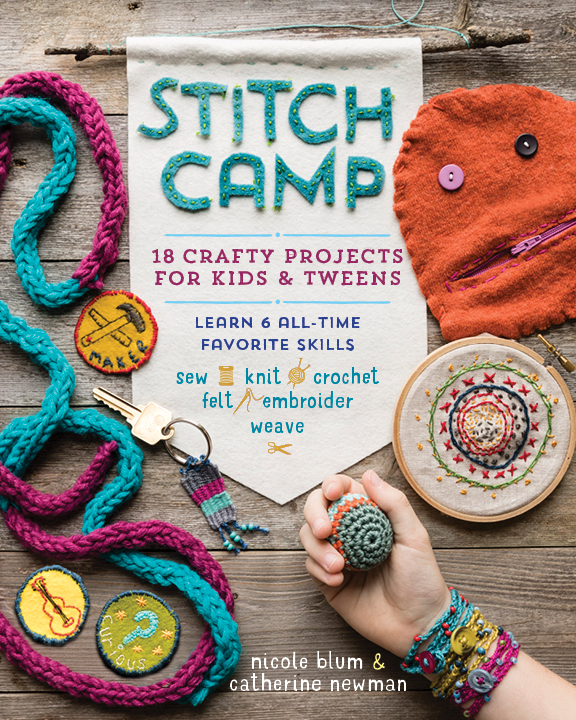
Leave a comment in today’s post by November 20, 2017 and you are in the running for this fun fiber crafting book.
Open to U.S. residents only please.
In today’s thriving maker culture, kids are hungry for hands-on guidance in creating stylish wearables and practical objects, or hacking and customizing existing ones. Authors Nicole Blum and Catherine Newman get them started with complete instructions for mastering six favorite fiber crafts. Step-by-step photos teach kids ages 9–14 the basics of how to sew, knit, crochet, felt, embroider, and weave, plus how to make three projects for each craft. From woven patches and a knitted backpack to embroidered merit badges and a crocheted bracelet, the fresh, kid-approved projects encourage creative variations and build confidence along with valuable life skills.

this looks like a good book to learn stuff
A good book for teens and tweens to learn different crafting techniques
Looks like a cool looking book, My kids would love it.
What a fun book! Always looking for ways to ignite the joy of crafting with the youth!
My girl scouts would love making proud from here!
I have two girls that would love this!
Great Christmas Gift…
Oh! My grandsons would LOVE to learn these crafts!
How I would love this for my grand daughter.
OH BOY! That would be perfect for me and my grandkids plus Nov. 23rd is my birthday!!
My great neice is turning 10 in a few weeks and she loves to craft! The book would be perfect for her!
I’d love this to teach my daughter and our Odyssey of the Mind team 🙂
Looks like a fun book! The possibilities are endless!
Would love to do with my granddaughter!
Everyone needs craftiness – the book would be great.
The book must be interesting and useful! Thanks for your shanring.
My daughter would love this.
I would love this for my granddaughter who is learning to craft and sew now. We’d have so much fun with it!